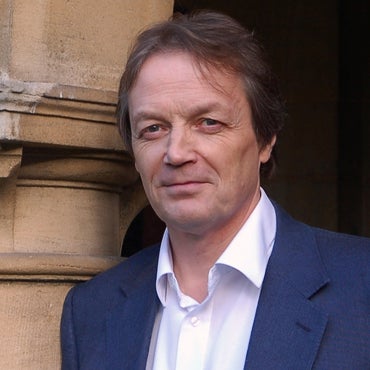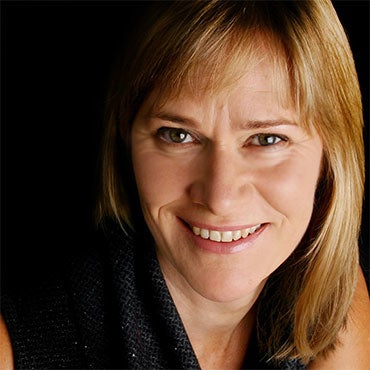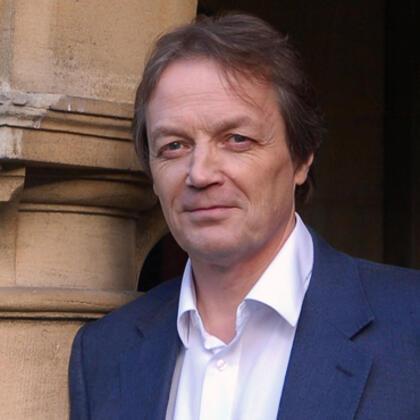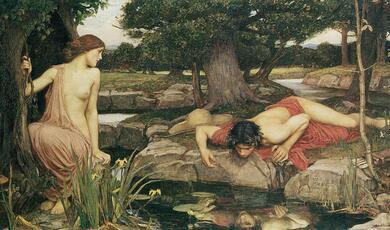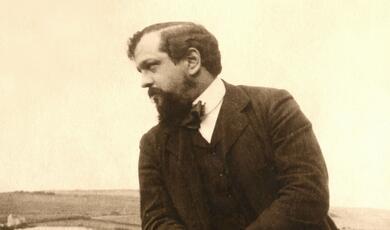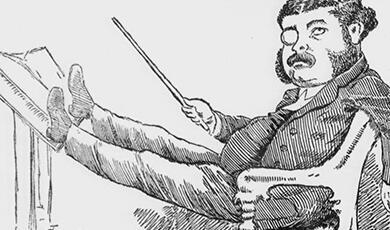Singers in the Making of Europe
Share
- Details
- Transcript
- Audio
- Downloads
- Extra Reading
By the twelfth century the West could be imagined as a soundscape of Latin plainsong and be given a name: Latinitas. The Gregorian chants for the Mass figured prominently in this body of shared material, and were spread by many different methods of colonisation and conquest. This was both internally by the foundation of new houses in abandoned or waste areas and externally by crusade in Spain, eastern Europe and Livonia. The singers of the Latin churches were therefore masters of an art that belongs with other aspects of medieval culture that helped to impel what may be called ‘the making of Europe’.
Download Transcript
4 May 2017
Singers in the Making of Europe
Professor Christopher Page
I begin with a robbery that is alleged to have taken place not far from here in the year 1143. The scene is the Priory of St. Bartholomew at Smithfield, whose Norman Church still stands and will be known to many of you. At the time that concerns us, Smithfield is an ill-favoured place of executions and abattoirs, as it was long to remain. The thieves on this occasion broke into the church, but they were not so very rapacious. They took no plate, no chalices, no vestments. All they wanted was a book. The only item they stole from the church was an antiphoner: a volume of plainsongs and an essential work of reference for the singers who were charged to maintain the choral services. As the house-chronicle of the priory records, the book ‘was necessarie to them that schulde synge ynne the chirche’. Once the loss was reported, the Prior and the canons searched without success, but that same night the patron of the house, Saint Bartholomew, visited the Prior in his chamber and gave him the information he needed to recover it. He was to saddle his horse early next morning and go into the city of London, then make his way to the Jewish quarter, marked today by the street of Old Jewry. He was then to loosen the reins, leaving the horse to the governance of the saint. The Prior followed these commands, and in the morning he found the book that he sought in the house of a Jewish merchant.
Such at least is the story. And here is another. It is told by Geoffrey Chaucer who is often thought of today as a genial author, and yet it is a Canterbury tale that I tell with some reluctance. A Christian child, of tender years, is learning at school to sing an antiphon in honour of the Virgin Mary. He rehearses the antiphon to himself as he passes through a Jewish quarter on his way home. The Jews are infuriated by this irruption of Christian plainsong into their district, especially since the chant is a Marian one and is therefore an offensive celebration of the Israelite God taking human flesh. They capture the child as he passes and murder him, only to find that he continues to sing, revealing his whereabouts to the Christians with predictable consequences. The chant he sings is Alma redemptoris mater.
These two stories are told in different ways, though they are alike in that they both charge the Jews with crimes that they certainly did not commit. And there is something else that they share: they evoke a place, Latin Christendom, where the chant of singers rises in a constant reverberation of sound that continues when the markets are closed and the city gates shut after curfew. In both stories, the consensus of monasteries, churches and schools working to that end is so closely identified with the proper social order that it is a crime – a theft or a murder – to silence the voices. Even then, the consequences are only momentary: the book is recovered; the voice breaks out again. What is more, there is nothing in the identity of the criminals to stir fresh fears, only to confirm old hatreds. The culprits are the Jews: contained, for the most part, by their designated quarter of the city and by the legislation that curtails their freedoms. The disturbing possibility of disharmony arising within the Christian community itself does not arise.
You will not be surprised to hear that there was a great deal of variation in the chant of Western Europe: in the melodies, in the manner of performing them, in the saints that were venerated. There were also pockets of individual tradition at Toledo, for example, and Milan. It is not my purpose to suggest the medieval singers achieved the impossible and created a homogenous body of chant for the Latin West; the desire for a proud independence could be pursued down to the level of individual churches wishing to shake of the influence of a domineering bishop, for example; medieval clergy were landowners with their own rights and traditions. And yet the idea of a universal plainsong repertory increasingly shaped the way in which Latin Christians after 1200 envisaged the larger world in which they lived, despite the large number of minor (and not so minor) discrepancies between the usages of different churches, and despite the fractures, sometimes painful, caused by individual histories at Milan and elsewhere. It is not the measure of demonstrable unity achieved that matters here, but rather the willingness of Latin Christians to believe that they worshipped in essentially the same way, and chanted essentially the same melodies, in a place increasingly called ‘the Latin world’ or Latinitas after 1100. You knew you were in Christian territory where singers in monasteries, friaries and other churches knew an antiphon like the one in Chaucer’s story, Alma redemptoris mater
Alma redemptoris mater
By the time of Chaucer in the fourteenth century, and indeed long before, much of Western Europe used a liturgy widely regarded as Roman. I have tried, in my previous lectures, to give some sense of how that happened. You might say (and many contemporaries would have done) that to spread that liturgy was to accept Christ’s charge to his apostles that they should go out into the whole world. The task of lords, missionaries and indeed of all pious Christians, if they had the means to do it, was to ‘expand the bounds of the faith’. That might mean founding a hospital or monastery in a place where there were none before, or a military adventurism that might require conquest, colonisation and the shedding of blood. The Latin idiom dilatare terminos (‘to expand the bounds’) was considered to be as apt for the dissemination of the Catholic faith into pagan territory as it was for the spread of the accompanying feudal jurisdiction kept in place with armed knights.
Yet the underlying metaphors of thought in this context were not so much martial as agricultural. Without liturgy, there was no cultus in any sense of the word: no cult at the altar and no systematic cultivation of grain. The association of the two was profound. Although many convents and friaries were built in cities and towns, the imagery of claiming barren territory for the gospel, or of colonising lands infested with thieves and devils, was often associated with these institutions, not least because they were sometimes built for travellers in places far from any other source of protection and support. In parts of Spain, where the issue of populating empty territories with Christians could be especially pressing, the charters of hospitals and other documents repeatedly emphasize (and no doubt sometimes exaggerate) the remoteness of the location chosen for a new foundation. We hear of houses found in places ‘once overgrown with forest and frequented by robbers, very dangerous to travellers… [but] now fertile and pleasant’.
In 1103, King Alfonso VI of Spain granted funds to the bishop and clergy of Oviedo to build a hospital on a mountainous site; the foundation charter describes it as a region of ‘vast solitude’ that would now be populated with pilgrims and other wayfarers. As Otto of Bamberg, the apostle of Pomerania, pressed forward through what is now eastern Germany, he was a celestial gardener pulling up evil by the roots and planting good where the power of devils had once sprouted forth, like weeds. Where the seeds of the gospel and choral liturgy had not yet fallen on fertile ground, Nature was barren of harvest, void and even corrupt, producing monstrosities like the dog-headed men, the cynocephali, whom Adam of Bremen reported in the Russian slave-markets, yapping a form of human speech. In parts of Latvia, Lithuania and Estonia, where the work of conquest and conversion is well documented, a Christian headquarters existed in the stockade settlement of Riga whence merchants, knights and Cistercian monks set out to explore the surrounding countryside and ‘sow the seed of the gospel’. Going ‘where no apostle had ever been’, they baptised and laid out parishes while the merchants sought out the trading stations for furs, amber and slaves. Singers went with them. One chronicle shows monks singing the Sequence at Mass while hostile pagan horsemen galloped around their church; another has them chanting the responses ‘but half alive’ when supplies were short in winters so severe that the extremities of the body froze. In an especially vivid passage, the Livonian Rhymed Chronicle describes a party of merchants striking out along the River Dvina, taking care to have with them ‘a wise man to read and chant the service’. If a single image can express the work of the Latins in this and other frontier territories, this one of a clerical or monastic singer taking a boat with knights and merchants into a northern heart of darkness will serve very well.
To evangelists in the field, like Otto of Bamberg in the early years of the twelfth century, the plainchant of singers in a clerical party was a useful tool, together with the material opulence of incense and vestments made of expensive dyed or embroidered textiles. Otto once entered a dangerous district accompanied by wagons of vestments, missals and other things ‘which it is hard to find in a pagan country’. His party was encircled, as night fell, by a band of local men who came upon them in a forest. He escaped death because the leader of the pagan group was actually a Christian, but on another occasion, when he and his clergy were not so lucky in whom they met, they owed their lives to their plainsong. Threatened with imminent martyrdom, the clerics in Otto’s entourage began to sing psalms and chants that the pagans stopped to listen, seemingly amazed. Their hearts were softened and they relented.
In eleventh-century Spain, where frontiers could be shifting but sharply drawn, frontier monasteries were spoken of in the same breath as new bridges or castellos de fronteras de mauros, ‘castles on the frontiers with the Moors’. In eleventh-century Aragón, implanting a monastery with its singers was work that consolidated the Christian presence near a disputed margin, just like building a castellum or castle. Far to the east, in the Levant, there were isolated attempts to establish a liturgical frontier well before the First Crusade that did the work – but to no lasting effect – in the Holy Land. When abbot Richard of St. Vanne (d. 1046) journeyed to Antioch, he pressed into one of the neighbouring emirates and began singing Masses outside the walls of the cities he encountered, amidst a hail of stones, while a group of clerics sang the choral responses at a safe distance. Those who manned the walls of those cities had good reason to be alarmed, for they were seeing the extreme periphery of an encroaching Latin civilisation, heavily armoured, but they saw it first as a priest and a group of singers.
How was this possible? Much of the answer lies with something that many of us still use every day: the musical staff. Now it is important to emphasise once more that the question of what would made musical notation ‘useful’ to any particular singer in the Middle Ages has no simple answer; it is a question about different ways of living some form of common life and balancing its demands. For the purposes of writing a treatise designed to teach or codify, however, it was important to have something to illustrate a discussion so that those who read a teacher’s account would know what he author meant even though he was not there to sing what he meant.
One idea was to make a diagram of the strings of an instrument, such as a lyre or harp, and then write the syllables of the chant on the string one would need to pluck to get the result:
Here, you will notice, the spaces between the lines have no meaning. Now it so happens that we know a good deal about the man who claims, in effect, to have invented the spaces, and who probably did do so, sometime in the decades immediately after the year 1000. He had an immensely high opinion of himself, though he thought singers to be the most foolish of individuals, for their greatest labours were likely to produce the smallest results: they were condemned to pass many years trying to learn the chants for the year by heart. This man’s name was Guido: Guido of Arezzo. He is often spoken of today as a monk, but a near contemporary called him a hermit, and I think that may be closer to the mark. I don’t mean that Guido lived in a hut on the edge of a forest; he actually dwelled in the monastery of Pomposa, and at one time he served the bishop of Arezzo. But he did believe, as many in his day were beginning to suppose, that a life of prayerful solitude, possibly in a remote cell, was necessary to understand why a thorough reform of the Church, which Guido thought impure, was necessary, and that only those who lived that ascetic life had the moral authority to speak out. Purity was one of Guido’s great themes: especially the purity of a clergy not corrupted by the touch of money, of blood (which they were forbidden to shed) or sex. Taking various kinds if method already in use, Guido configured the ancestor of the notation we still use to ensure a purity of chant. He also hoped that monks and clergy would now have more time for prayer, for the recitation of psalms, for nocturnal vigils and for the other duties that he calls opera pietatis, the works of devotion.
So Guido set himself the task of combining the two forms of notation that were then in use. On one hand, there were the neumes: delicate strokes of the pen that drew the movement of pitch and were associated with various kinds of vocal nuance. When written as you see them on the handout, at the foot of page 1, they indicated the direction of the pitch movement but they did not measure it. On the other, there was the technique, which we still employ, of representing notes by the letters abcdefg. This gave a clear indication of pitch, but conveyed no nuance.
Guido associated these two methods, with results that are presented in many different ways by scribes; you have one example at the top of page 2.
Scribes could then abbreviate. You have an example as the second manuscript extract on page 2, showing part of a chant by Hildegard of Bingen.
Columba aspexit
The Cistercian monks – those who built our own great abbeys of Fountains and Rievaulx, among others - were especially active in spreading this new system with staff lines. Much that was authentic had been lost, or so the Cistercians believed, through the ignorance of singers; it was therefore necessary to get back to purity and truth. With their communities of lay brothers to create farms, build barns and byres or dig canals and ditches, the Cistercians became a major force in twelfth-century agriculture and animal husbandry, often near frontier zones. Stave-notation seems to have travelled with them wherever they went in Europe, as surely as their store of chalices, hoes and spades.
The system was on the move from the end of the eleventh century onwards as knights from many parts of Latin Christendom went east. The Council of Clermont, convened by Urban II in 1095 to conduct business that included the proclamation of an armed and penitential pilgrimage to Jerusalem, or what we now call the First Crusade. This was responsible for the creation of Latin bishoprics in the Holy Land, and for the slow process of staffing churches in conquered territories with clergy and singers, that followed the unexpected success of that Crusade in 1099. By the early 1100s, priests who celebrated Mass in the church of the Holy Sepulchre in the Latin kingdom of Jerusalem were using books with delicate forms of northern French staff-notation, copied in the Latin kingdom but using exemplars shipped out from the West. (We heard a chant from one of those books in my second lecture of this series). Would it have been possible to mount a sung service in the new churches of the Holy Land if the singers, priests and chaplains who served them were required to learn all their chants by heart?
Plainsong had achieved an extraordinary status. Monks, nuns and clergy now shared a means to record events so that they would be perceived, wherever the account was read, not just in terms of time measured by the hourglass or water-clock, but also in the light of eternity. In 1202, abbot William of Eskill in Zeeland died on the eve of Easter Sunday, and one of his disciples traced his last hours through the liturgical services in which the saint barely had the strength to engage. On the Maundy Thursday William tried to perform the ceremony of washing the brothers’ feet, but was too weak. Led to his chamber, he eventually asked for his bed to be carried into the choir so that he could take part in the Easter day services. At Matins, the choir had just begun the third Responsory, Dum transisset sabbatum, when a sign was given that abbot William was now at the point of death. His life began to pass away as the Sabbath passed. Dawn broke, and after singing the Responsory Ut venientes ungerent Jesum, describing the anointing of Christ’s body, the Prior and some of the brothers left the choir to anoint William with holy oil. William was then dressed in penitential clothes and laid on a bed of cinders. He died soon afterward, rising to a new life on the day of the Resurrection as the choir tearfully but triumphantly sang the appointed chant to end the service before the beginning of Lauds, Te deum laudamus. William passed the last years of his life in one of the most remote abbeys of Latin Christendom; yet by the time of his death in 1202 there were many hundreds of churches and monasteries where this account would have been understood, in its fullest and most moving spiritual depth, because the Office antiphoners and ordinals in those houses prescribed essentially the same sequence of chants for these same hours. The compiler perceives the meaning of what happened, and the facts of what happened, in terms of the appointed readings and chants. The events happened in time, and yet also out of it.
Another of the ways in which singers helped to create a common culture in medieval Europe is so discreet that it could easily be missed. Since each day of the liturgical year had its chants assigned, reference to a specific chant could be used to fix the day when something occurred or was planned to take place. The chants used in this way are almost invariably Introit antiphons, those that begin the Mass and which therefore lodge all the more easily in the memory. One of the earliest examples shows Saint Anselm referring to his consecration as archbishop of Canterbury (1093) ‘on the Sunday when the Introit Populus Syon is sung’. After 1100, however, it becomes increasingly common for chroniclers and others to place an event ‘on the Sunday of Laetare Jerusalem’ (the Fourth Sunday in Lent) or in relation to other Introits that include Oculi mei (Third Sunday in Lent), Dum sanctificatus (Pentecost Sunday). In 1131, the Introit Laetare Jerusalem identifies an appointed day in a letter of Innocent II, showing that this method to define the day of some past or imminent event was already so universally understood that it could be used in a document issued by the patriarch of the Latin West. The repertory of liturgical singers had by now joined the movement of celestial bodies as a cycle that defined the passage of time.
Long afterwards, when even much more organized attempts to hold Jerusalem for the Latins had failed, the Franciscan Galvano de Levanto lamented that ‘there is only the abominable melody of Saracens’ in the Holy Land ‘where there should be the worship of Jesus Christ and chant’. The silencing of Latin-Christian music is the most vivid means he can find to express the loss of the Christian East. With the fall of Acre in 1291, the last major bastion of the Christian presence in Outremer, the muezzin and minaret definitively silenced the cantor and the bell-tower. In the same year another Italian friar, Ricoldo of Monte Croce, travelled through much of what is now Iraq and found a looted missal on sale in Al-Mawsil, north of Baghdad, almost certainly looted from the churches of Acre. The attempt to extend the chant of Latin singers had failed in Palestine and Syria; now its dismembered materials were adrift in the bazaars of the Orient.
So there were many failures, not all of them regrettable. The musical stave was a Latin-Christian invention and was confined, for many centuries, to the Occidental lands where Latin was the exclusive language of liturgical singing. It provided the means for an aggressively expansionist civilization to train singers relatively quickly so that the flag of the Latin liturgy could be planted, so-to-speak, in Spain, in Livonia, in the Holy Land, and in a great many of the larger hospitals and chapels, many in rural or indeed wild locations. There is something to lament there, but also something to laud. The world has the Passions of J. S. Bach, and the late quartets of Beethoven, because monks, clergy and knights of the central Middle Ages drained marshes, took boats along uncharted rivers and attempted to reclaim, at huge cost to themselves and to others, the holiest shrines of their faith.
Laetare Jerusalem
© Professor Christopher Page, 2017
This event was on Thu, 04 May 2017
Support Gresham
Gresham College has offered an outstanding education to the public free of charge for over 400 years. Today, Gresham plays an important role in fostering a love of learning and a greater understanding of ourselves and the world around us. Your donation will help to widen our reach and to broaden our audience, allowing more people to benefit from a high-quality education from some of the brightest minds.


 Login
Login
